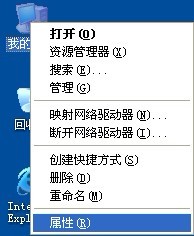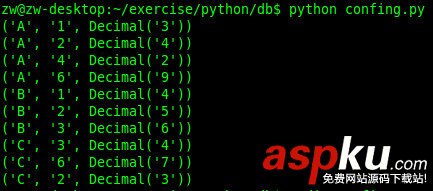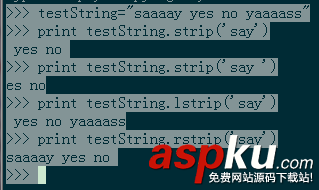Python是一門簡單而文字簡約的語言。閱讀好的Python程序感覺就像閱讀英語,盡管是非常嚴格的英語。Python的這種偽代碼特性是其最大強項之一,它可讓你專注于解決問題的辦法而不是語言本身。
在使用Python多年以后,我偶然發(fā)現(xiàn)了一些我們過去不知道的功能和特性。一些可以說是非常有用,但卻沒有充分利用。考慮到這一點,我編輯了一些的你應該了解的Pyghon功能特色。
帶任意數(shù)量參數(shù)的函數(shù)
你可能已經(jīng)知道了Python允許你定義可選參數(shù)。但還有一個方法,可以定義函數(shù)任意數(shù)量的參數(shù)。
首先,看下面是一個只定義可選參數(shù)的例子
def function(arg1="",arg2=""): print "arg1: {0}".format(arg1) print "arg2: {0}".format(arg2) function("Hello", "World") # prints args1: Hello # prints args2: World function() # prints args1: # prints args2: 現(xiàn)在,讓我們看看怎么定義一個可以接受任意參數(shù)的函數(shù)。我們利用元組來實現(xiàn)。
def foo(*args): # just use "*" to collect all remaining arguments into a tuple numargs = len(args) print "Number of arguments: {0}".format(numargs) for i, x in enumerate(args): print "Argument {0} is: {1}".format(i,x) foo() # Number of arguments: 0 foo("hello") # Number of arguments: 1 # Argument 0 is: hello foo("hello","World","Again") # Number of arguments: 3 # Argument 0 is: hello # Argument 1 is: World # Argument 2 is: Again 使用Glob()查找文件
大多Python函數(shù)有著長且具有描述性的名字。但是命名為glob()的函數(shù)你可能不知道它是干什么的除非你從別處已經(jīng)熟悉它了。
它像是一個更強大版本的listdir()函數(shù)。它可以讓你通過使用模式匹配來搜索文件。
import glob # get all py files files = glob.glob('*.py') print files # Output # ['arg.py', 'g.py', 'shut.py', 'test.py'] 你可以像下面這樣查找多個文件類型:
import itertools as it, glob def multiple_file_types(*patterns): return it.chain.from_iterable(glob.glob(pattern) for pattern in patterns) for filename in multiple_file_types("*.txt", "*.py"): # add as many filetype arguements print filename # output #=========# # test.txt # arg.py # g.py # shut.py # test.py 如果你想得到每個文件的絕對路徑,你可以在返回值上調(diào)用realpath()函數(shù):
import itertools as it, glob, os def multiple_file_types(*patterns): return it.chain.from_iterable(glob.glob(pattern) for pattern in patterns) for filename in multiple_file_types("*.txt", "*.py"): # add as many filetype arguements realpath = os.path.realpath(filename) print realpath # output #=========# # C:/xxx/pyfunc/test.txt # C:/xxx/pyfunc/arg.py # C:/xxx/pyfunc/g.py # C:/xxx/pyfunc/shut.py # C:/xxx/pyfunc/test.py 調(diào)試
下面的例子使用inspect模塊。該模塊用于調(diào)試目的時是非常有用的,它的功能遠比這里描述的要多。
這篇文章不會覆蓋這個模塊的每個細節(jié),但會展示給你一些用例。
import logging, inspect logging.basicConfig(level=logging.INFO, format='%(asctime)s %(levelname)-8s %(filename)s:%(lineno)-4d: %(message)s', datefmt='%m-%d %H:%M', ) logging.debug('A debug message') logging.info('Some information') logging.warning('A shot across the bow') def test(): frame,filename,line_number,function_name,lines,index=/ inspect.getouterframes(inspect.currentframe())[1] print(frame,filename,line_number,function_name,lines,index) test() # Should print the following (with current date/time of course) #10-19 19:57 INFO test.py:9 : Some information #10-19 19:57 WARNING test.py:10 : A shot across the bow #(, 'C:/xxx/pyfunc/magic.py', 16, '', ['test()/n'], 0) 生成唯一ID
在有些情況下你需要生成一個唯一的字符串。我看到很多人使用md5()函數(shù)來達到此目的,但它確實不是以此為目的。
其實有一個名為uuid()的Python函數(shù)是用于這個目的的。
import uuid result = uuid.uuid1() print result # output => various attempts # 9e177ec0-65b6-11e3-b2d0-e4d53dfcf61b # be57b880-65b6-11e3-a04d-e4d53dfcf61b # c3b2b90f-65b6-11e3-8c86-e4d53dfcf61b
你可能會注意到,即使字符串是唯一的,但它們后邊的幾個字符看起來很相似。這是因為生成的字符串與電腦的MAC地址是相聯(lián)系的。
為了減少重復的情況,你可以使用這兩個函數(shù)。
import hmac,hashlib key='1'data='a'print hmac.new(key, data, hashlib.sha256).hexdigest() m = hashlib.sha1() m.update("The quick brown fox jumps over the lazy dog") print m.hexdigest() # c6e693d0b35805080632bc2469e1154a8d1072a86557778c27a01329630f8917 # 2fd4e1c67a2d28fced849ee1bb76e7391b93eb12 序列化
你曾經(jīng)需要將一個復雜的變量存儲在數(shù)據(jù)庫或文本文件中吧?你不需要想一個奇特的方法將數(shù)組或?qū)ο蟾褶D(zhuǎn)化為式化字符串,因為Python已經(jīng)提供了此功能。
import pickle variable = ['hello', 42, [1,'two'],'apple'] # serialize content file = open('serial.txt','w') serialized_obj = pickle.dumps(variable) file.write(serialized_obj) file.close() # unserialize to produce original content target = open('serial.txt','r') myObj = pickle.load(target) print serialized_obj print myObj #output # (lp0 # S'hello' # p1 # aI42 # a(lp2 # I1 # aS'two' # p3 # aaS'apple' # p4 # a. # ['hello', 42, [1, 'two'], 'apple'] 這是一個原生的Python序列化方法。然而近幾年來JSON變得流行起來,Python添加了對它的支持。現(xiàn)在你可以使用JSON來編解碼。
import json variable = ['hello', 42, [1,'two'],'apple'] print "Original {0} - {1}".format(variable,type(variable)) # encoding encode = json.dumps(variable) print "Encoded {0} - {1}".format(encode,type(encode)) #deccoding decoded = json.loads(encode) print "Decoded {0} - {1}".format(decoded,type(decoded)) # output # Original ['hello', 42, [1, 'two'], 'apple'] - <type 'list'=""> # Encoded ["hello", 42, [1, "two"], "apple"] - <type 'str'=""> # Decoded [u'hello', 42, [1, u'two'], u'apple'] - <type 'list'=""> 這樣更緊湊,而且最重要的是這樣與JavaScript和許多其他語言兼容。然而對于復雜的對象,其中的一些信息可能丟失。
壓縮字符
當談起壓縮時我們通常想到文件,比如ZIP結(jié)構(gòu)。在Python中可以壓縮長字符,不涉及任何檔案文件。
import zlib string = """ Lorem ipsum dolor sit amet, consectetur adipiscing elit. Nunc ut elit id mi ultricies adipiscing. Nulla facilisi. Praesent pulvinar, sapien vel feugiat vestibulum, nulla dui pretium orci, non ultricies elit lacus quis ante. Lorem ipsum dolor sit amet, consectetur adipiscing elit. Aliquam pretium ullamcorper urna quis iaculis. Etiam ac massa sed turpis tempor luctus. Curabitur sed nibh eu elit mollis congue. Praesent ipsum diam, consectetur vitae ornare a, aliquam a nunc. In id magna pellentesque tellus posuere adipiscing. Sed non mi metus, at lacinia augue. Sed magna nisi, ornare in mollis in, mollis sed nunc. Etiam at justo in leo congue mollis. Nullam in neque eget metus hendrerit scelerisque eu non enim. Ut malesuada lacus eu nulla bibendum id euismod urna sodales. """print "Original Size: {0}".format(len(string)) compressed = zlib.compress(string) print "Compressed Size: {0}".format(len(compressed)) decompressed = zlib.decompress(compressed) print "Decompressed Size: {0}".format(len(decompressed)) # output # Original Size: 1022 # Compressed Size: 423 # Decompressed Size: 1022 注冊Shutdown函數(shù)
有可模塊叫atexit,它可以讓你在腳本運行完后立馬執(zhí)行一些代碼。
假如你想在腳本執(zhí)行結(jié)束時測量一些基準數(shù)據(jù),比如運行了多長時間:
打眼看來很簡單。只需要將代碼添加到腳本的最底層,它將在腳本結(jié)束前運行。但如果腳本中有一個致命錯誤或者腳本被用戶終止,它可能就不運行了。
當你使用atexit.register()時,你的代碼都將執(zhí)行,不論腳本因為什么原因停止運行。
結(jié)論
你是否意識到那些不是廣為人知Python特性很有用?請在評論處與我們分享。謝謝你的閱讀!



















